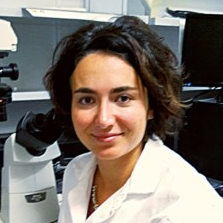Research Progress on 3D Cultures for Modeling the Microenvironment
A special issue of International Journal of Molecular Sciences (ISSN 1422-0067). This special issue belongs to the section "Materials Science".
Deadline for manuscript submissions: closed (31 March 2024) | Viewed by 488
Special Issue Editor
Interests: cardiac microenvironment; cardiac repair mechanisms; 3D culture
Special Issues, Collections and Topics in MDPI journals
Special Issue Information
Dear Colleagues,
Methods and protocols for creating 3D cultures in vitro have been rapidly evolving in recent years, involving both biomaterials and structure design. Creating a 3D microenvironment for cell cultures allows complex interactions and stimuli that are functional for efficient phenotypic control and for mimicking tissue homeostasis and pathology. These tools can be used to successfully generate artificial tissues or cellular organoids that could be used for modeling the microenvironment in a physiologically relevant way, in addition to being used for drug screening or exploiting tissue engineering strategies in the clinical translation of regenerative medicine approaches.
This Special Issue will bring together scholars in the field of 3D cultures for the creation of in vitro microenvironments for the study of tissue homeostasis and pathology, particularly in the field of cardiovascular research. Potential topics include, but are not limited to, the following: novel methods for creating 3D cultures and tissue patches; study of the microenvironment in 3D cultures; modeling human diseases or pathological conditions in vitro; tissue engineering for regenerative medicine purposes; stem cell differentiation in 3D cultures; bioprinting of artificial tissues; development of smart biomaterials; and cell–extracellular matrix interactions in the context of 3D tissue development and function.
Dr. Isotta Chimenti
Guest Editor
Manuscript Submission Information
Manuscripts should be submitted online at www.mdpi.com by registering and logging in to this website. Once you are registered, click here to go to the submission form. Manuscripts can be submitted until the deadline. All submissions that pass pre-check are peer-reviewed. Accepted papers will be published continuously in the journal (as soon as accepted) and will be listed together on the special issue website. Research articles, review articles as well as short communications are invited. For planned papers, a title and short abstract (about 100 words) can be sent to the Editorial Office for announcement on this website.
Submitted manuscripts should not have been published previously, nor be under consideration for publication elsewhere (except conference proceedings papers). All manuscripts are thoroughly refereed through a single-blind peer-review process. A guide for authors and other relevant information for submission of manuscripts is available on the Instructions for Authors page. International Journal of Molecular Sciences is an international peer-reviewed open access semimonthly journal published by MDPI.
Please visit the Instructions for Authors page before submitting a manuscript. There is an Article Processing Charge (APC) for publication in this open access journal. For details about the APC please see here. Submitted papers should be well formatted and use good English. Authors may use MDPI's English editing service prior to publication or during author revisions.
Keywords
- 3D culture
- tissue engineering
- microenvironment
- disease modeling
- stem cell differentiation
- regenerative medicine
- biomaterials
- cell–extracellular matrix interaction






